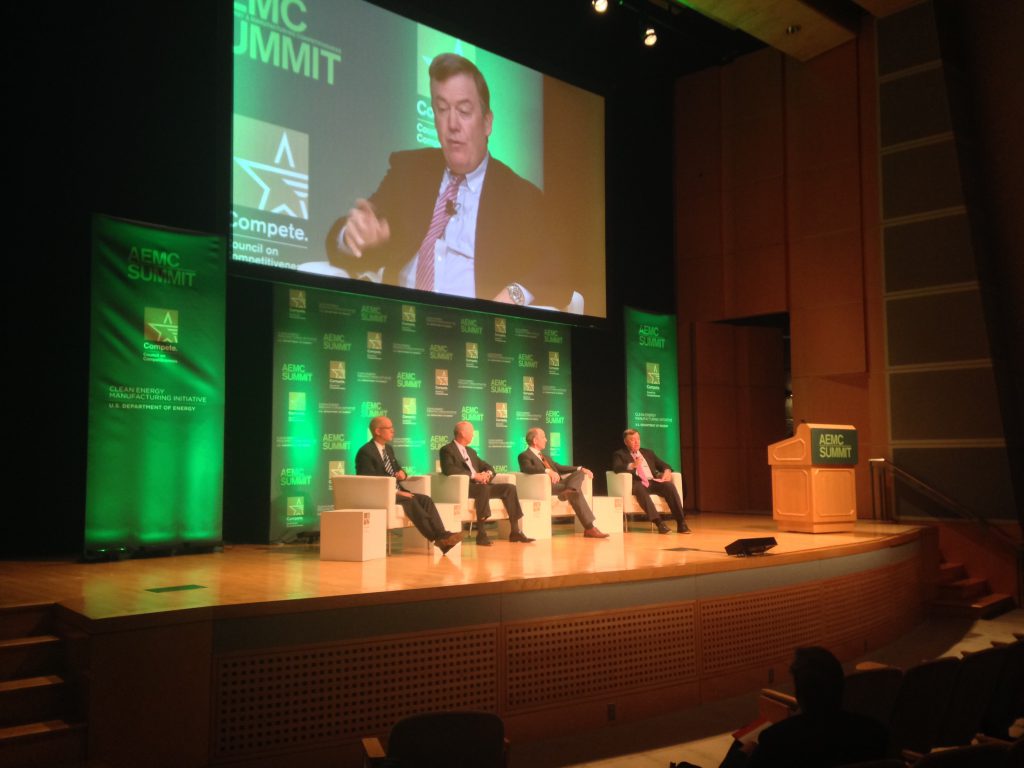
But is the coordinated policy plan manufacturing needs being prepared?
"There are reasons for optimism," said Jason S Miller to a crowded amphitheather in Washington, DC, "about the rebound of American manufacturing."
Mr. Miller, the deputy director of the White House's National Economic Council, was addressing the Council on Competitiveness' American Energy and Manufacturing Competitiveness Summit, which had gathered executives, academics, and labor leaders together to talk about emerging trends driving productivity in the national economy.
The average hours worked per week for manufacturing employees is the highest it has been in a long time, noted Miller, suggesting a "pent-up hiring" wave is upon us. He also noted surveys of business executives that reveal a growing confidence in the U.S. manufacturing climate; the recent domestic energy boom and its implications not only for business that are energy-intensive, but for those up and down the supply chain; and a strong American culture of innovation that remains intact, despite decades of downsizing and offshoring in the manufacturing sector.
That's not to say there are significant roadblocks, Miller cautioned. The median age of American manufacturing workers is 45, suggesting the country's manufacturing labor pool could become shallow quickly; and years of underinvestment have pushed the average age of capital equipment in the U.S. to its highest in decades.
But Miller said the White House has a plan to overcome those obstacles, broadly defined, Miller said, they are a focus on comptetitiveness, innovation, human capital, and trade enforcement (there he is at the Brookings Institution earlier this summer, spelling them out).
But, broadly defined, they still aren't much of a serious manufacturing policy.
It's clear that Mr Miller — and by extension, the White House — seem to have a good grasp on many of the challenges that face U.S. manufacturers. So why not go the full way, and call for full-throated trade enforcement, a long-term infrastructure spending plan, and a will to crack down on international currency manipulation?
Leo Gerard, president of the United Steelworkers, asked as much 15 minutes after Miller's keynote, during a panel discussion. "We need, as a nation, an industrial strategy," he told the assembly, noting that America was on the short list of OECD countries operating without such a comprehensive policy. And despite the optimism, the proof is in the pudding: Manufacturing employment, despite modest recent rebounds, has bottomed out over the last 14 years.
Push the envelope. Give American manufacturers the industrial strategy that will help them compete in a global marketplace.
